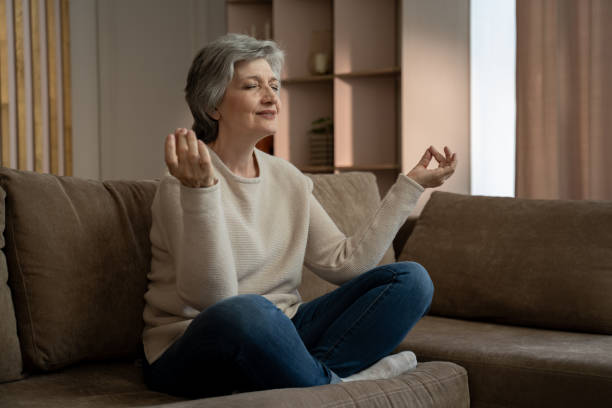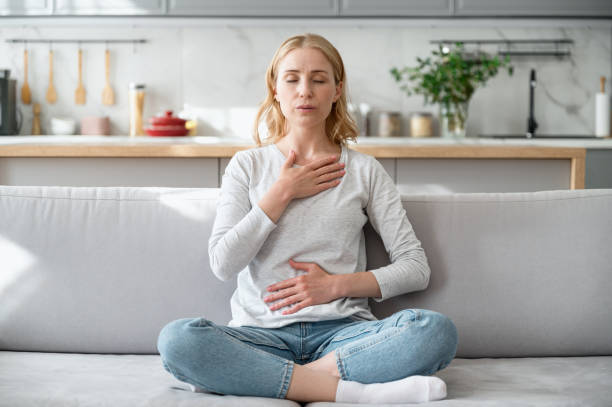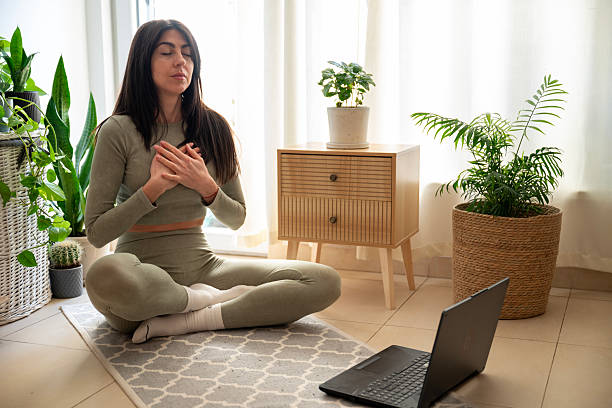Introduction
Today, we discuss mindfulness practices for anxiety relief. Mindfulness has been widely recognized as a powerful tool for managing anxiety in recent years. Mindfulness practices for anxiety relieve symptoms by encouraging the individual to stay present and aware and to notice their thoughts and feelings without judgment. Beginner Mindfulness: Some of your stressors and frustrations may stem from events that occur in your daily life.
For this guide, we explore multiple mindfulness techniques to help you overcome anxiety, providing you with actionable tips that you can apply in your daily life. Learning how mindfulness fits in with relieving anxiety has the power to change how you view your mental health, bringing clarity to the craziness that life can throw at you.
How Mindfulness Helps Reduce Anxiety

Mindfulness practices benefit those who suffer from anxiety for many reasons. Research has demonstrated that mindfulness can help reduce anxiety and improve mood and well-being overall. Both of these powerful skills enable the individual to avoid their mind slipping into a downward spiral of overthinking or negative thoughts, bringing them back to the present moment.
Mindfulness practices to relieve anxiety can also help to promote emotional regulation, giving you the ability to respond to your stressors in a more effective way. By practicing mindfulness, you may notice lower levels of anxiety, which in turn provides a more stable mood.* All of these benefits, which extend far beyond simply reducing anxiety, help create a deeper sense of connection to ourselves and the world.
First Steps in Mindfulness Practices
Starting your mindfulness practice can feel intimidating, but it can also be simple and straightforward. Initially, spend a few minutes a day doing mindfulness practice. You need a quiet place where you’re comfortable and free from distractions. When you feel comfortable, breathe, listening to the rhythm of your own breathing in and out. Let thoughts arise and dissolve without passing judgment, gently redirecting your focus to your breath.
This simple mindfulness practice for anxiety relief serves as the foundation for all other mindfulness practices you may eventually undertake, so start here and build from there. You learn to be patient and compassionate with yourself along this process.
Breathing Exercises for Calm
Breathing exercises are among the most basic approaches to mindfulness for anxiety relief, and they can put you into a state of relaxation in seconds. For example, if you practice diaphragmatic breathing (breathing deep down in the abdomen), to do this, sit or lie down in a comfortable position with one hand on your chest and the other on your abdomen. Breathe in slowly through your nose, and raise your abdomen; however, do not raise your chest. You are exhaling slowly from your mouth, noticing your belly come down.
Repeat this for a few minutes, allowing your focus to be on the rhythm of your breath. This technique will not only calm your nervous system but also make you more aware of the here and now, helping to alleviate anxiety.
Body Scan Meditation

Body Scan Meditation: It is a great form of mindful practice, emphasizing the need to focus on physical sensations. Get started by relaxing in whatever way works for you and closing your eyes. Starting at the top of your scalp, direct your focus to each part of your body in turn until you reach your toes. Observe any feelings, tension, or discomfort without judgment. Take a moment to work your way through your body, relaxing each part with the motion, releasing tension.
This technique creates a meditative framework that keeps you present in your body. Incorporating body scans regularly into your routine can provide significant relief from anxiety and enhance your overall well-being.
Mindful Walking
For this practice, mindful walking can be a great addition to your mindfulness practice to bring more movement into it. Find a relatively still place outdoors, and walk slowly, focusing on how your feet feel when they touch the ground. Pay attention to your breath as you walk, and notice the sights, sounds, and smells around you. Focus your mind entirely on walking; surrender your distractions and worries. This anxiety relief practice for mindfulness involves moving your body while being fully present in the moment, which can also leave you feeling refreshed and focused.
As you practice mindful walking, it may become one of your favorite aspects of your daily routine.
Journaling for Mindfulness

Journaling is a mindfulness resource that allows you to write down your thoughts and feelings. Dedicate time every day to writing about your experiences, your feelings, and any malaise you may experience. This process not only helps you become aware of feelings but also helps you realize patterns and triggers related to your anxiety.
Breathe and stay in the present as you write. This can settle you and encourage a sense of calm. Journaling can also be a space to let out those pent-up emotions, one of the most powerful ways to practice mindfulness and alleviate anxiety. The longer you do it, the more you might start to notice a change in mindset that leaves you feeling less anxious.
Guided Meditation
A different approach is guided meditation for anxiety. Through numerous applications and websites, you can find guided meditation sessions led by professionals. When I do this, I play calming music and listen to soothing narration, which allows me to let go and focus on the present moment. If you want to meditate, choose one that feels good for you; it could be breath awareness meditation, loving-kindness meditation, or visualization.
With a guide, you can ease into mindfulness practices without fear of being overwhelmed. Guided meditations can aid significantly in relieving your anxiety while also accelerating your journey to mindfulness.
Being More Mindful When You Eat
Being mindful in your daily life will help strengthen your practice and alleviate anxiety. If you’re washing dishes, pay attention to the sensations associated with washing dishes; if brushing your teeth, pay attention to the sensations associated with brushing your teeth; if preparing or eating a meal, pay attention to the sensations associated with preparing or eating a meal. When eating, notice the colors, textures, and flavors of your food, for instance. Savor every bite, chewing slowly, and release distractions.
This practice opens up the door for you to be present in the current moment, cultivating mindfulness from the mundane. Using mindfulness in daily activities allows you to create a more peaceful, well-centered life, thus making a way to manage your anxiety.
Seeking Professional Guidance
Although mindfulness exercises can be quite powerful, it may benefit some people to seek professional guidance. However, they can offer personalized support, guidance, and techniques tailored to your specific needs, based on your mindfulness approach. Previously being part of group classes or workshops centered around mindfulness can also provide you with a sense of community and commitment that can help support your practice as well. If anxiety does not subside despite your best efforts, consider seeing a mental health professional who specializes in mindfulness-based therapies. They can help guide you on the journey for anxiety relief and will teach you tools for dealing with stress.
Conclusion
Discovering Mindfulness Practices for Anxiety Relief. Through consistent practice of breathing exercises, body scans, and mindful walking, you can develop a greater sense of grounding and resilience in your life. As you begin to explore these practices, remember that patience and consistency are essential. Every little step you take is a step towards a healthier you, and the more you get to know yourself, the more you can do for your body and mind.
With practice, you can stay in the present and learn about your emotions from this perspective, allowing you to control anxiety, paving the way for a way of life that is more stable and peaceful. So why wait? Begin your journey now and experience the magic of mindfulness firsthand.





